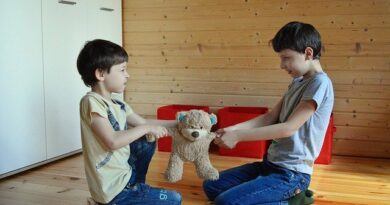Sibling Fighting Solutions: When It Never Stops
If your sibling children are constantly fighting, it might be time to consider a Sibling Fighting Solution. Listed below are some simple strategies for reducing sibling rivalry. These ideas will also help you prevent future fights by strengthening the relationship between your children. These solutions are sure to work for any type of sibling conflict. Try the suggestions below and see if they help. Sibling rivalry can be a huge problem, so learning more about it will help you deal with it more effectively.
Relationship between siblings
The relationship between siblings as a solution to sibling fighting involves putting children in the same boat, so to speak. Siblings often argue, so it is essential for parents to step in and offer a solution. But it is important not to act as a judge and jury. Rather, the key is to help bring the children back together for a solution. This may require a bit of time and patience, but is well worth it when the fights are over.
Children’s relationships with their siblings are based on the relationships they see around them. Having high self-esteem means children won’t be as tempted to compete for attention or love, or degrade their siblings. Moreover, siblings often get stressed when things in the family change. For instance, a baby may start to walk and run around, siblings may move to different schools, or parents might divorce or remarry. Parents that are aware of the impact of such events have a better opportunity to address fights.
Sibling rivalry usually begins when one child is given more attention than the other. When they are younger, parents will try to give their first child more of what he or she wants, including extra attention and treats. However, when a younger sibling arrives, the eldest child feels ignored due to the decrease in attention and begins to compare everything to the new sibling, creating jealousy.
Children with easy temperaments and challenging temperaments are usually treated differently by parents. The difference in temperaments can increase competition between siblings. If the siblings are of the same gender, for example, an active child may “bug” the quieter one into playing or reading, which causes a fight. Same-gender siblings are generally more competitive, although this is not always the case.
Ways to reduce sibling rivalry
There are many ways to minimize sibling rivalry. Parents can encourage positive relationships by engaging in positive games with their children. Children who behave well get attention, and parents should give them time-outs if they start to lose control. In addition, parents should avoid placing expections inconsistant with the level of development on the younger child or making unrealistic goals for family harmony. If siblings are constantly bickering and fighting, there are ways to reduce sibling rivalry and make them more compatible.
The solution to a sibling fight should start by addressing the problem. Make sure to designate special time to each child. This will allow each child to have one-on-one time with their parents, which may help foster healthy interaction among siblings. If your children feel neglected, they will start to resent you for it, making the situation even worse. Instead of giving in to sibling fighting, give them special time to spend with you.
Another way to handle sibling fighting is to teach your children to be more accepting of their differences. While sibling rivalry is inevitable, it teaches kids valuable life lessons and makes them stronger individuals. In the meantime, parents should let go of the idea that a solution to sibling fighting is simply the same as eliminating it. If they are able to do this, they can use their parenting skills to help their children learn to get along better with each other.
Parents can play a major role in reducing sibling rivalry by demonstrating the importance of valuing their individuality. By not labeling children and spending time with each one, parents can foster individuality, which helps reduce sibling rivalry. Parents should stay calm when children argue. By showing patience and remaining calm, children will learn to respect their siblings’ boundaries and avoid conflict.
While fighting among siblings is inevitable, it can teach children important lessons. In addition to teaching children how to handle conflict, parents can show children how to negotiate and compromise. By giving them the opportunity to talk to each other about their differences, parents can make fighting less of a hassle. Siblings who spend time with each other can also develop a close bond. However, if fighting is frequent, parents can spend more time with each child.
Most siblings will argue with each other at some point. It’s normal for siblings to argue, but frequent and intense fights can cause lasting damage. While fighting between siblings can help kids develop social skills, it can also lower self-esteem and increase the risk of depression and delinquency as adults. It may also encourage siblings to behave in delinquent ways as a means to gain the attention of their parents.
While children’s temperaments are not necessarily in conflict with each other, sibling rivalry is often a sign of emotional trauma. Parents should sit down with their children to understand what’s bothering them, and make sure to listen to all children equally. By taking time to understand each child, parents can help prevent the rivalry. And when they are able to work out the causes, attempt to find ways to fix or minimize the damage it is creating.
Lack of physical activity is another cause of sibling rivalry. Without any extracurricular activities, children become bored and frustrated, which allows them the negative energy to oppose ideas and feelings. Parents can encourage children to participate in physical activities such as sports or outside play, or even better, actively play with the children themselves. This creates a stronger relationship between all family members, and provides opportunites for healthy exercise.
In more serious situations, children can form a modified peer support group when their parents are unfaithful to each other or neglectful. When siblings can’t directly protect one another, they might huddle together as a way to survive. This can create an insider/outsider mentality that can harm future relationships, as well as cause friction between the different groups. If this is the case, it is time to intervene.
Steps to take to prevent fights
During times of relative peace, kids should learn coping mechanisms and problem-solving techniques. It is important for them to practice these strategies in calm and turbulent moments. This will also teach them social skills, such as how to ask a sibling to play and how to decline. In addition, children should learn to see the other’s perspective in such situations. Steps to take to prevent siblings fighting are endless. Try the following methods.
Never step in to resolve disputes. Parents who intervene miss the chance to teach children effective problem-solving skills. Instead, tell the children that emotions are getting escalated and a possible fight is brewing. If the conflict revolves around an object or privilege, remove it from in the middle of the spat and see if both parties are satisfied. However, if the children are still fighting, avoid stepping in. Parents often end up escalating the situation when they try to act as referee, being perceived as prefering one child over another.
Prepare ahead of time. Be aware what will make your children fight. Having a plan ready beforehand can take much of the chaos out of the moment. You should also prepare for common fighting hot spots, such as in the kitchen, by making sure there are enough desired items (food, toys, etc.) for all of your kids.
When it comes to sibling rivalry, remember that it is often a way of obtaining attention. Avoid this situation by implementing these strategies. Instead, focus on helping your children understand the importance of each other and the importance of being a supportive family member. This will help prevent siblings from fighting and help them feel valued by their parents. However, do not allow sibling rivalry to become a habit.
While positive reinforcement may not completely stop sibling fights, it can help in fostering a culture of respect and harmony between the two. By using your child’s siblings as role models, parents can help them develop skills in conflict resolution and teach them how to build structures. In addition to positive reinforcement, parents can coach their older siblings on conflict resolution techniques and teach the younger ones to use the same strategies to solve conflict. So, if the two of your kids are not getting along, you can try these steps to prevent sibling fights.




